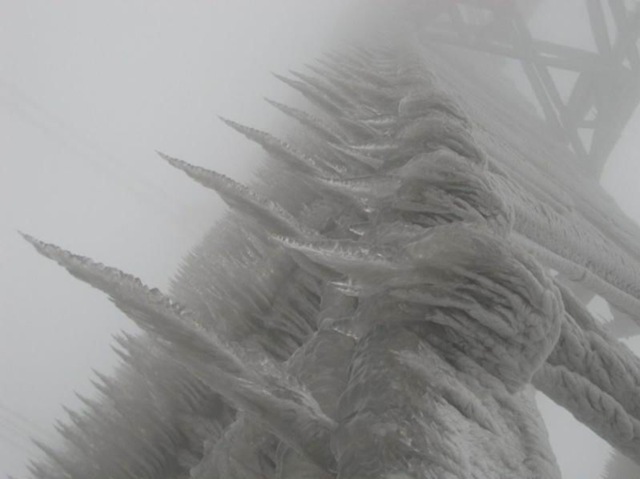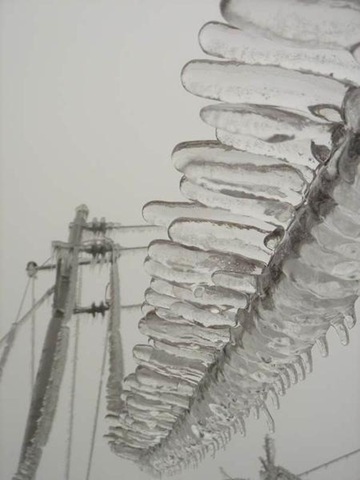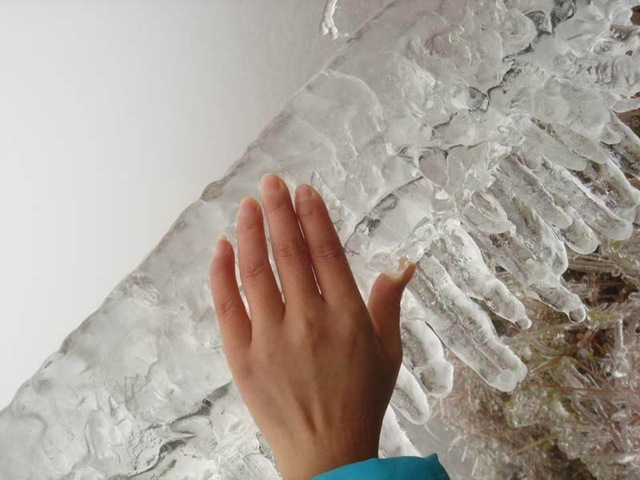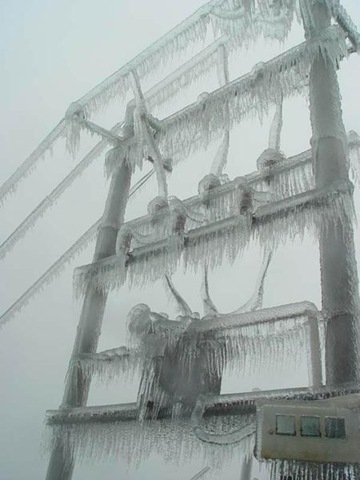I was wondering why snow in south China caused large scale power failure – snow is snow, and electricity power is electricity power. What is the connection?
Wendy sent me the photo, and I was shocked. This is what happened in South China in the last two weeks…







南方和北方对比,南方空气湿润,所以不管是雪、雨都会在冷空气的作用下迅速结冰,所以电线上就会有很厚的冰层。电线在冰层的压迫下产生张力,导致电线杆、塔倒塌。北方由于气候干燥,一般都是积雪,而不会结冰。
That’s not snow. That’s an ice storm.
In the United States, most storm induced power outages are caused by trees falling on power lines.
Actually, a big reason for the power outage in China is the lack of coal for power plants. Coal is transported on rail, and the rail has been knocked out for the most part.
中国的”灾情”太多了。
多了就不能叫”灾情”了。
秦岭保护了四川,长江中下游就没有那么幸运了。妖邪当道天生异象。
南方和北方对比,南方空气湿润,所以不管是雪、雨都会在冷空气的作用下迅速结冰,所以电线上就会有很厚的冰层。电线在冰层的压迫下产生张力,导致电线杆、塔倒塌。北方由于气候干燥,一般都是积雪,而不会结冰。
(Blues Mansion post translation, courtesy of bablefish)
South and north contrasts, south the air is moist, therefore no matter is the snow, the rain can rapidly ice up in under the cold air function, therefore in the electric wire can have the very thick ice layer. The electric wire has the tensity under the ice layer oppression, causes the telephone pole, the tower to collapse. North because the climate is dry, generally all is the snow, but cannot ice up.
I don’t know what some of y’all said. They all look like ?? marks to me.
I’ve seen enough ice storms in real life to know what that is. It’s not snow, it’s is caused by freezing rain.
According to Wikipedia:
Ice storms happen when a warm cloud rains above a layer of colder air. This lowers the temperature of the droplets to below zero, however it remains in liquid form. The supercooled droplets freeze into ice on impact when they fall onto a surface the temperature of which is close to, or below, freezing.
This freezing rain covers everything with heavy, smooth glaze ice. Ice-covered roads become slippery and dangerous. Driving becomes extremely hazardous as the ice causes most vehicles to skid out of control, which can cause devastating car crashes as well as pile ups. Even pedestrians are severely affected as sidewalks become slippery, which can cause people to slip and fall and outside stairs can become an extreme injury hazard.
In addition to hazardous driving/walking conditions, branches or even whole trees may break from the weight of ice. Falling branches can block roads, tear down power and telephone lines and cause other damage. Even without overhead tree branches, the weight of the ice itself can snap power lines, and power poles as well (even the big steel frame electrical pylons have crumbled under the weight of ice before). This can leave people without power for as long as several days to even weeks. According to most meteorologists, just one quarter of an inch of ice accumulation can add about 500 pounds of weight per line span. Damage from ice storms is highly capable of shutting down entire metropolitan areas.
These are indeed shocking images.
Cool
I’ve been reading about the “snow” storms in China for over a week now, but thanks to the photos here it all becomes clear. As “Mr. Cyrillic” says, it was an ice storm.
I have tried to find some information about the Maglev Train during the snnow chaos. Do you have any information?
this looks totallly wiked that ice is so kool!! It looks smexxy.